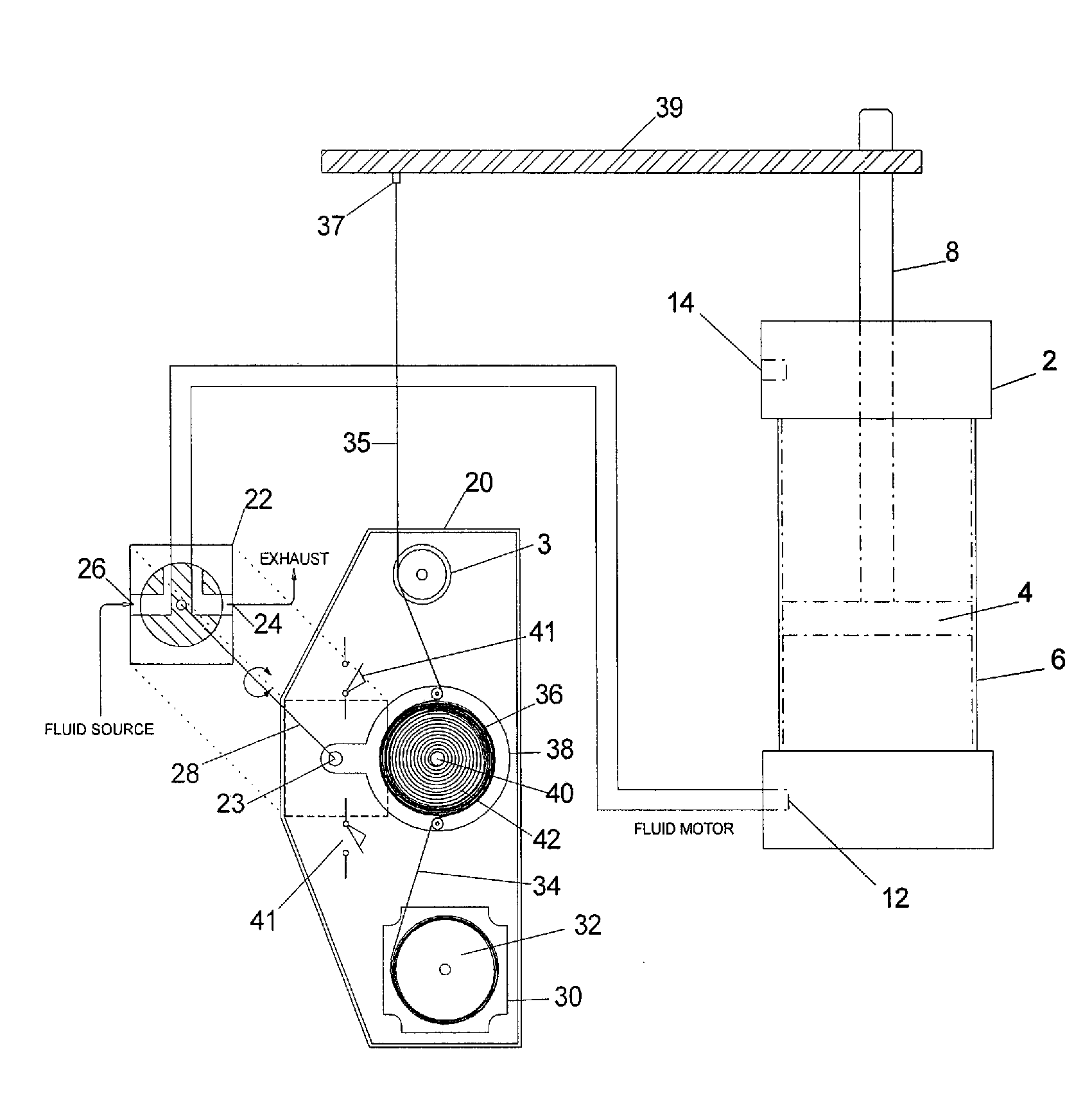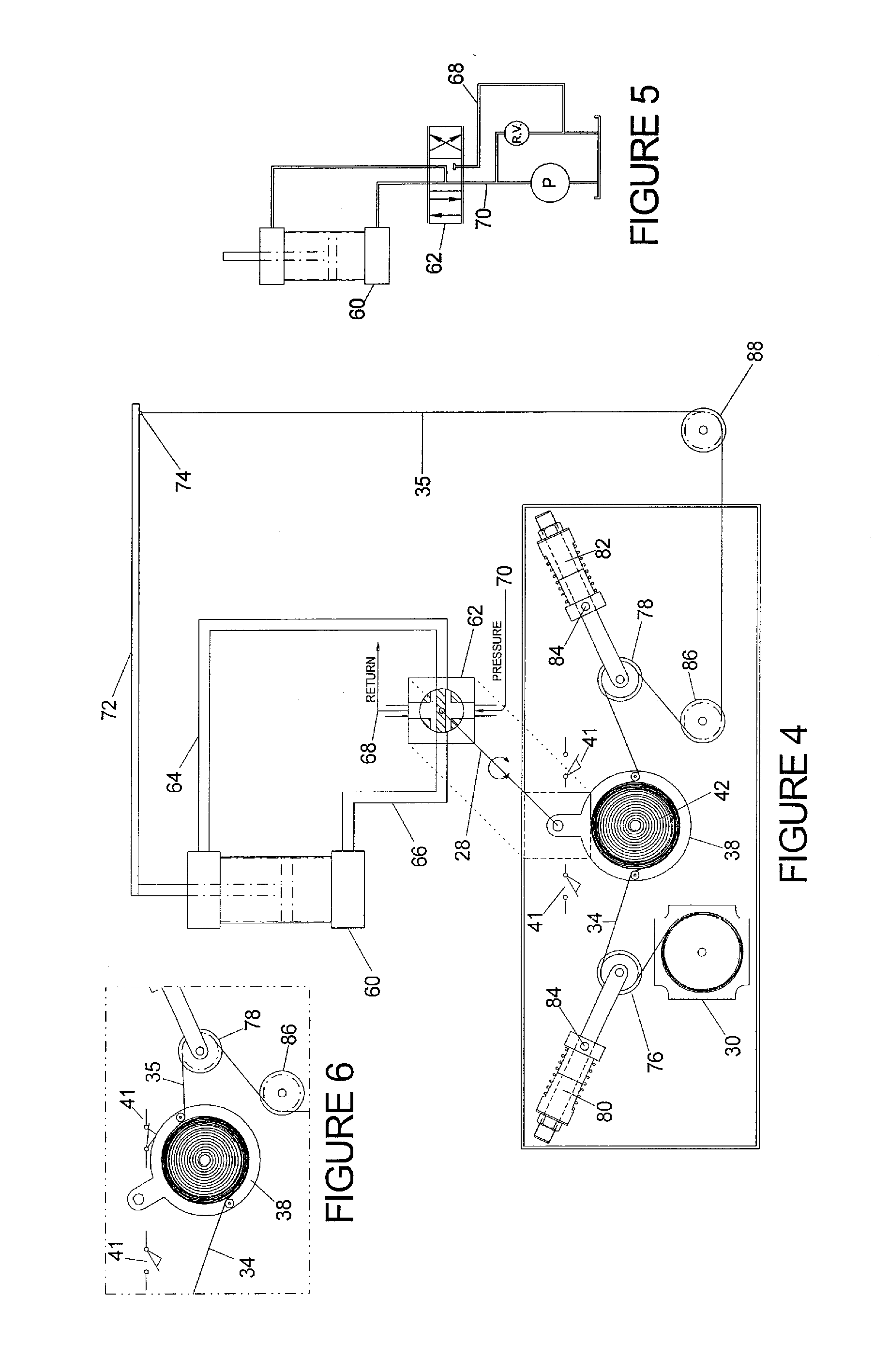Electro-mechanical control system for positioning fluid motors
a technology of electric motor and fluid motor, which is applied in the direction of dynamo-electric converter control, machine/engine, servomotor, etc., can solve problems such as affecting the operation of servo loops, and achieve the effects of simple and rugged design, low cost, and long-term operation
- Summary
- Abstract
- Description
- Claims
- Application Information
AI Technical Summary
Benefits of technology
Problems solved by technology
Method used
Image
Examples
Embodiment Construction
[0028]FIG. 1 is a schematic representation of the fluid motor and control system including a feedback control device that will provide accurate positioning of the fluid motor. The invention as shown in FIG. 1 includes a single acting fluid motor 2 having a piston 4 located within a working cylinder 6. Affixed to the piston 4 is an actuator rod 8. A rotary motor with a rotary actuator could be used in lieu of the piston and cylinder arrangement and linear actuator as shown. The fluid motor 2 includes inlet / outlet fluid passageways 12 and 14 located at opposite ends of the working cylinder 6. The fluid motor control system includes a housing 20. A fluid control valve 22 and a pair of fluid ports 24 and 26 are contained within housing 20. A valve actuator 28 is pivotally connected 23 in operative relationship with valve 22 to control the ingress and egress of fluid from ports 24 and 26. Control valve 22 is a multi way valve that is construed to include linear or rotary valves and is no...
PUM
 Login to View More
Login to View More Abstract
Description
Claims
Application Information
 Login to View More
Login to View More - R&D
- Intellectual Property
- Life Sciences
- Materials
- Tech Scout
- Unparalleled Data Quality
- Higher Quality Content
- 60% Fewer Hallucinations
Browse by: Latest US Patents, China's latest patents, Technical Efficacy Thesaurus, Application Domain, Technology Topic, Popular Technical Reports.
© 2025 PatSnap. All rights reserved.Legal|Privacy policy|Modern Slavery Act Transparency Statement|Sitemap|About US| Contact US: help@patsnap.com



